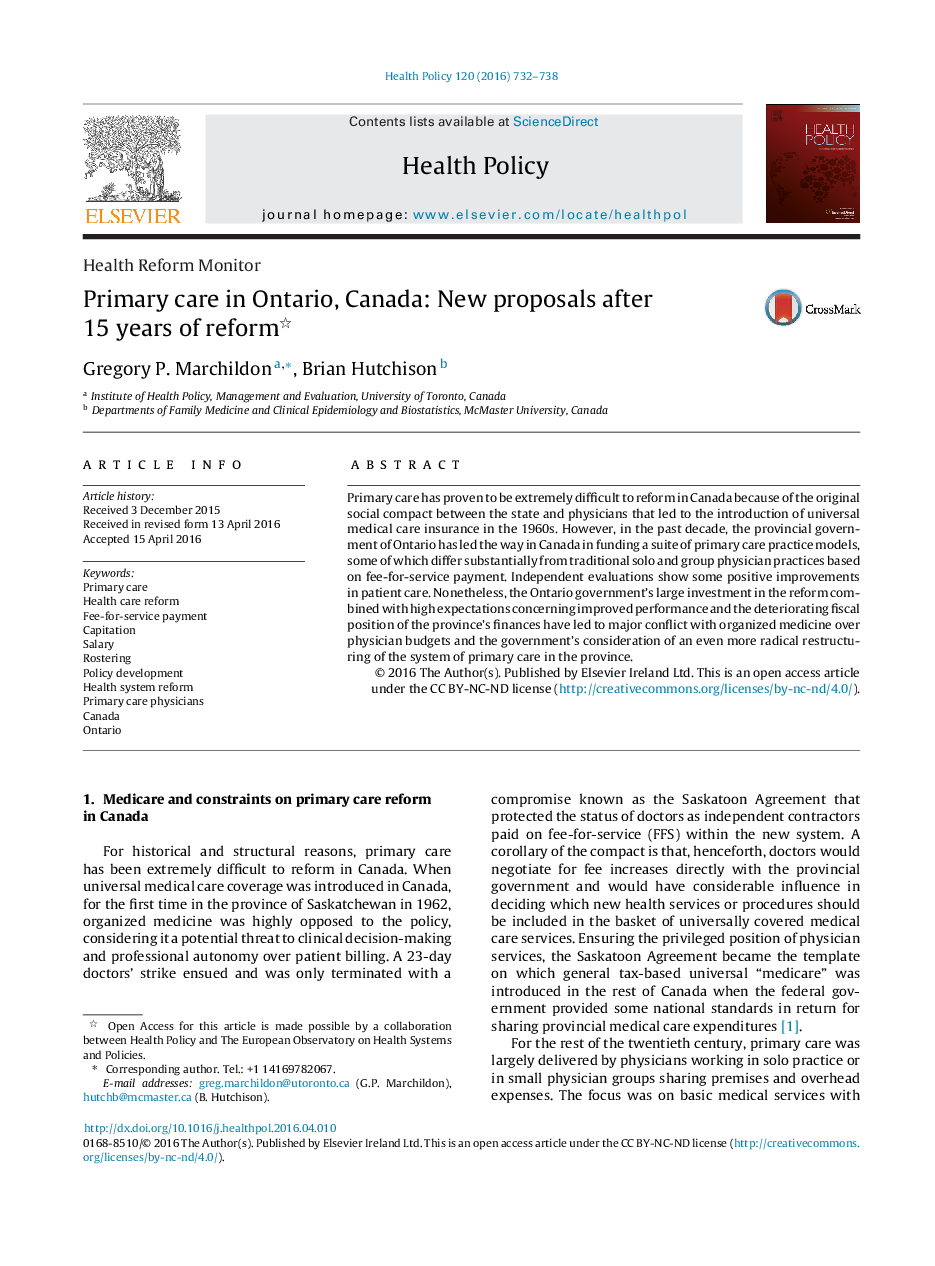| Article ID | Journal | Published Year | Pages | File Type |
|---|---|---|---|---|
| 6238892 | Health Policy | 2016 | 7 Pages |
â¢In the past decade, Ontario has led the way in Canada in funding a suite of primary care practice models.â¢These reforms were accompanied by major new investments but recent funding constraints have led to increased conflict with physicians.â¢An advisory committee recently established by the Ontario government has recommended more radical changes in financing and governance.â¢In response, the provincial government is proposing significant changes in the delivery of primary health care but has not accepted the more radical changes in governance and financing suggested by its advisory committee.
Primary care has proven to be extremely difficult to reform in Canada because of the original social compact between the state and physicians that led to the introduction of universal medical care insurance in the 1960s. However, in the past decade, the provincial government of Ontario has led the way in Canada in funding a suite of primary care practice models, some of which differ substantially from traditional solo and group physician practices based on fee-for-service payment. Independent evaluations show some positive improvements in patient care. Nonetheless, the Ontario government's large investment in the reform combined with high expectations concerning improved performance and the deteriorating fiscal position of the province's finances have led to major conflict with organized medicine over physician budgets and the government's consideration of an even more radical restructuring of the system of primary care in the province.
